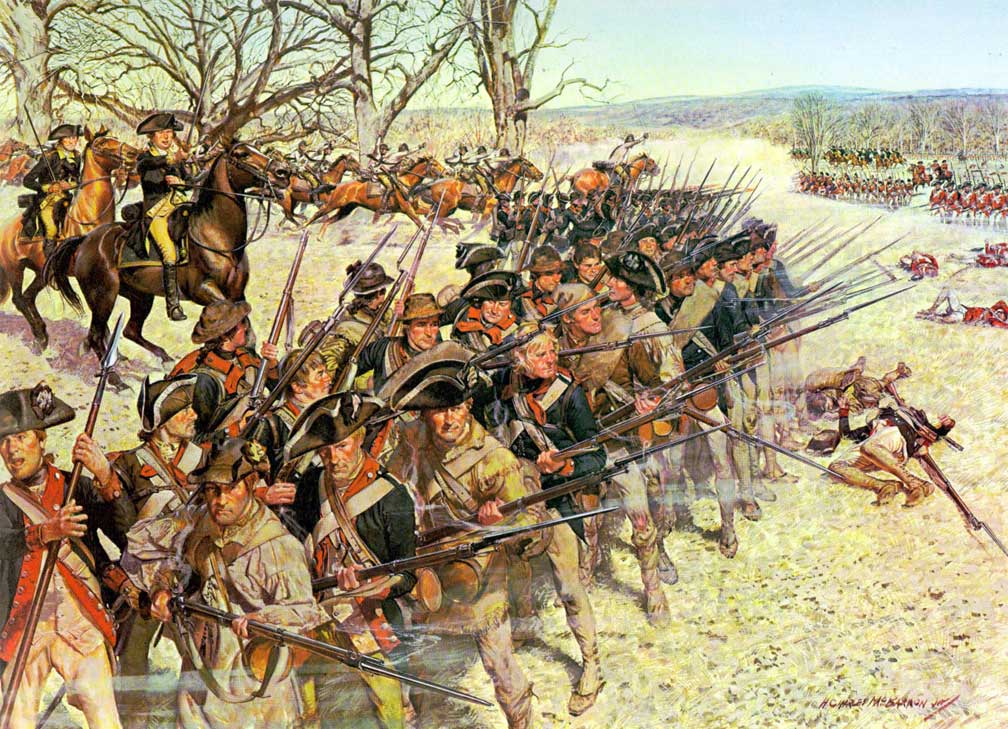Battle of Guilford Court House 1781

American forces under the command of General Greene attacked British forces commanded by General Cornwalis at Guilford Court House. The British forces won a tactical victory, but British losses were too heavy for Cornwalis' forces to bear. Thus the battle was an American win.
.
British General Cornwalis' planed that while Tarlelton was going after General Morgan, he would go after the larger force commanded by General Greene. Greene was aware of Cornwalis and headed North to avoid being caught by Cornwalis larger army. When word reached Cornwalis of Tarleltons defeat at the Battle of Cowpens Cornwalis was furious. Not only had Morgan's army not been crushed, he had lost only 25% of his forces. Cornwalis was now determined, more than ever, to exact revenge and crush Green and Morgan's troops. At the same time, Cornwalis was hopeful he could recapture his prisoners. Morgan did not want to give up his prisoners or supplies.
Morgan moved his army as quickly as possible to reunite with Greene's troops, which he did. Greene continued to direct his army north, while at the same time taking direct control over Morgan's troops. Greene continued masterfully. He withdrew northward, skillfully delaying Cornwalis all the way. In order to catch up with the Americans, Cornwalis burned his supply train and extra supplies. Greene retreated all the way back to Virginia, pulling Cornwalis the whole way. When it became clear that Greene and the Americans had gotten away, Cornwalis realized how exposed he was, with no supplies in hostile territory. Cornwalis began withdrawing southward. Greene and the Americans followed.
When the British arrived at Guilford Court House, Greene felt the time was right to fight. Greene had 4,300 troops, of which 1,600 were Continental regulars. Greene and his forces faced 2,200 British regulars. Greene had taken a card from Morgan's plan at Cowpens, and stationed the North Carolina militia in the first line. Greene told them to fire two shots, and then withdraw. They did that as the British advanced. Some fired too soon, but most waited until the British line was close enough for their actions to be effective.
Dozens of British were killed before the Americans fell back into the forest at the end of the field. The British then hit the second American line, which was waiting just inside the tree line. Heavy fighting continued for over an hour. Each side striking as hard as it could. The British lines began to buckle. Cornwalis ordered an artillery barrage, right at the line that included both his men and the Americans. The fire forced the sides to temporarily disengage, and the British troops to reform. Cornwalis was ready to reengange, but Greene decided that his men had enough that day.
The battle was a tactical victory for the British, since at the end of the battle they held the field. However, Cornwalis lost 550 of his men, compared to half that number lost for the Americans. With a few more victories like this one, Cornwalis would be without troops.
 >
>